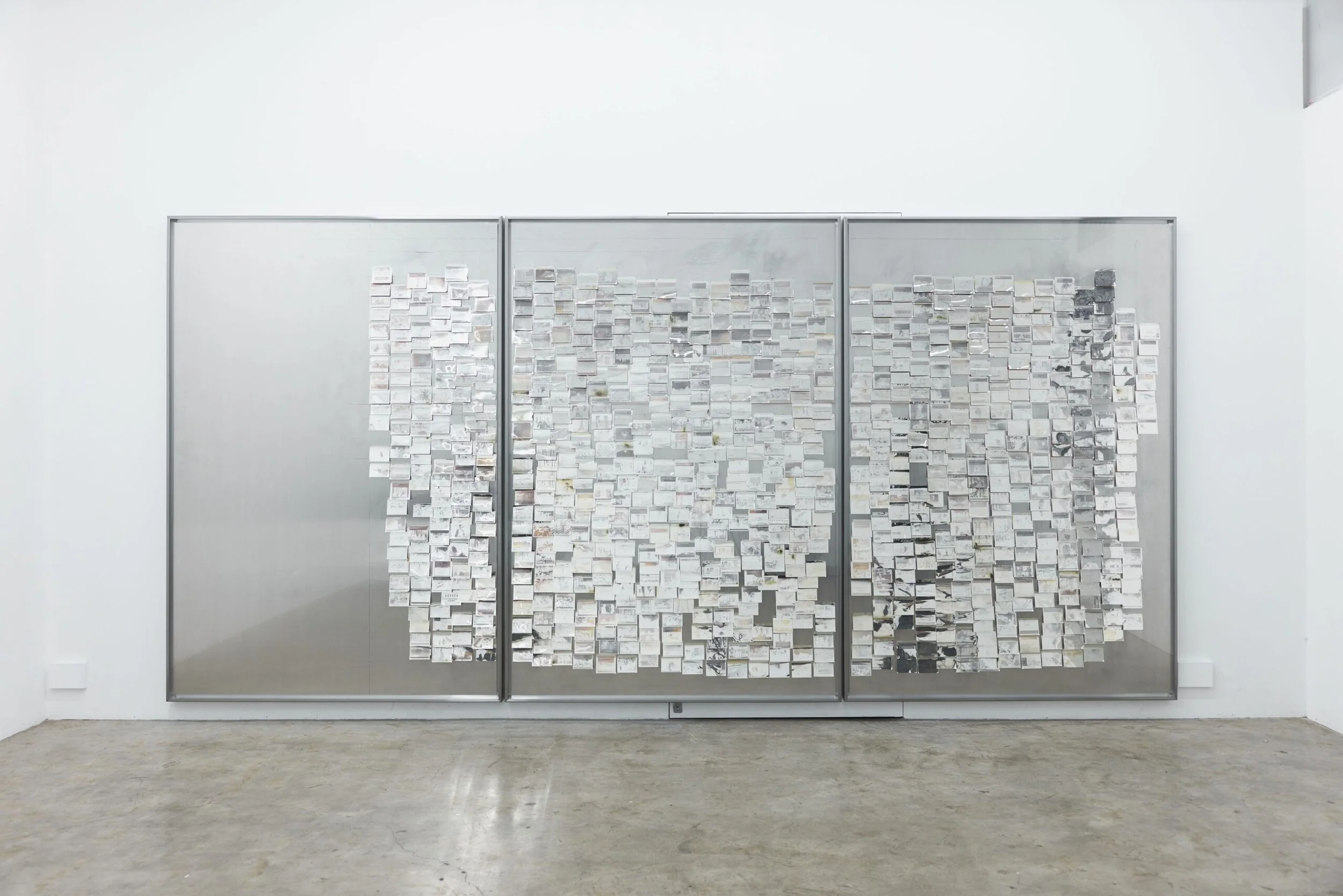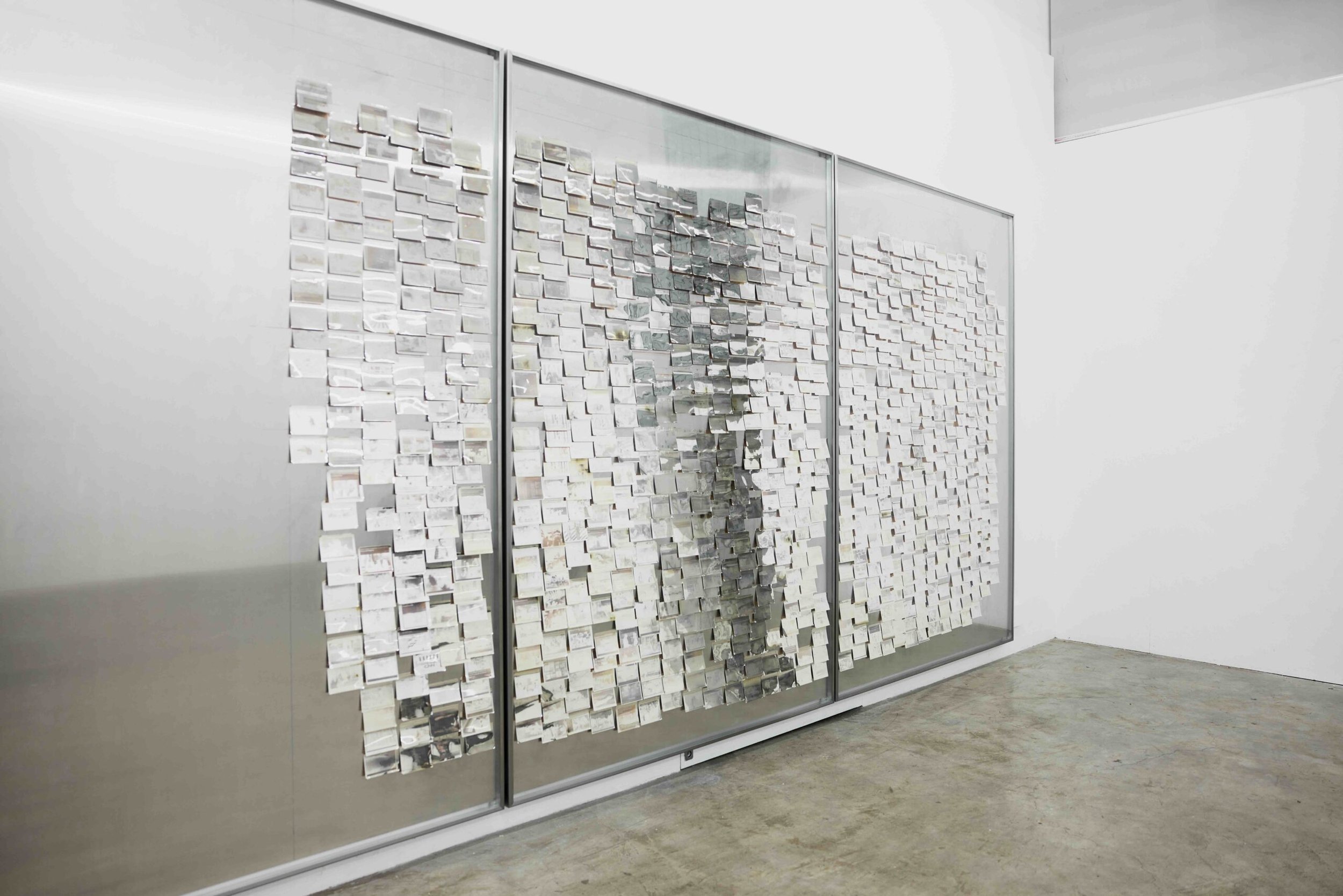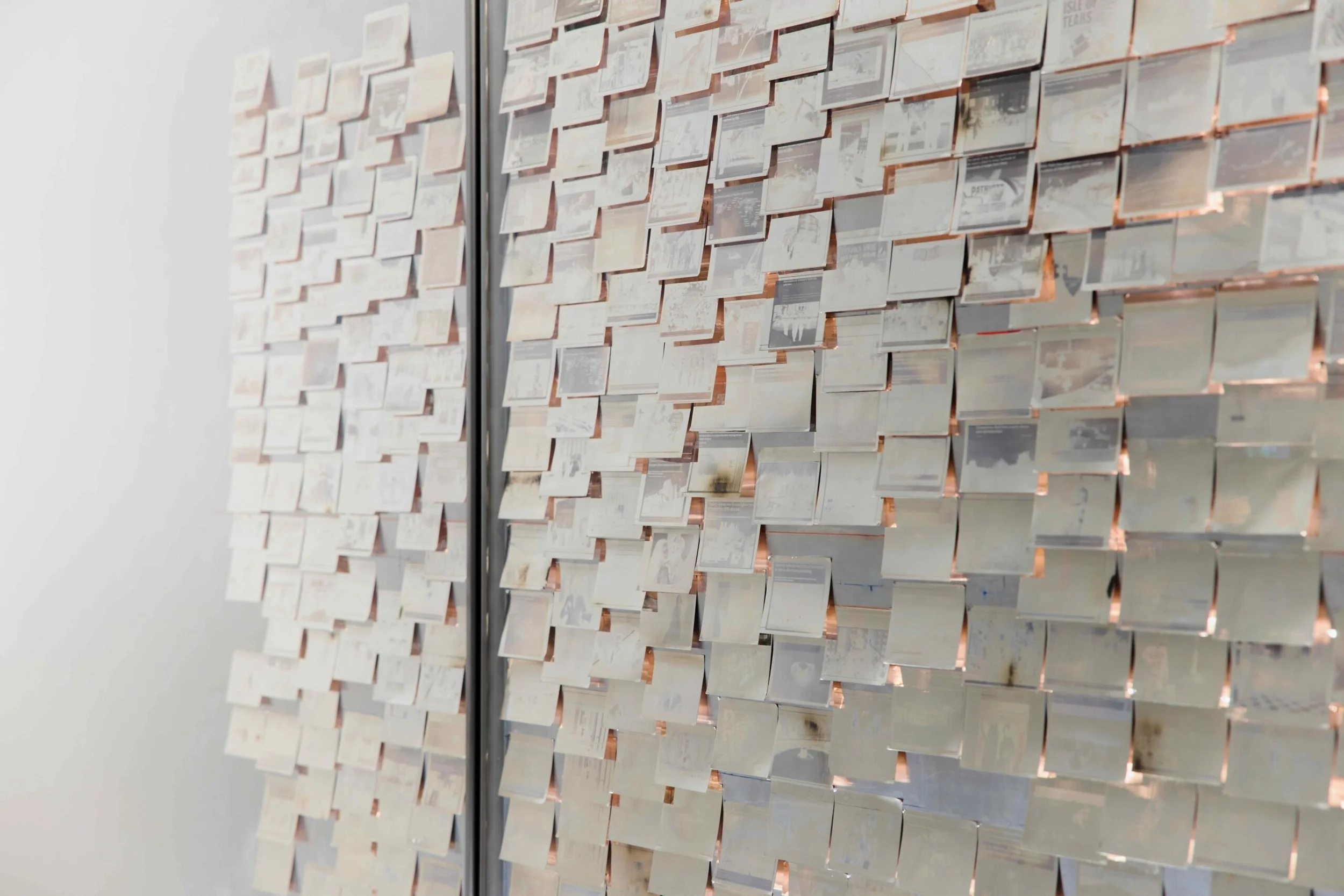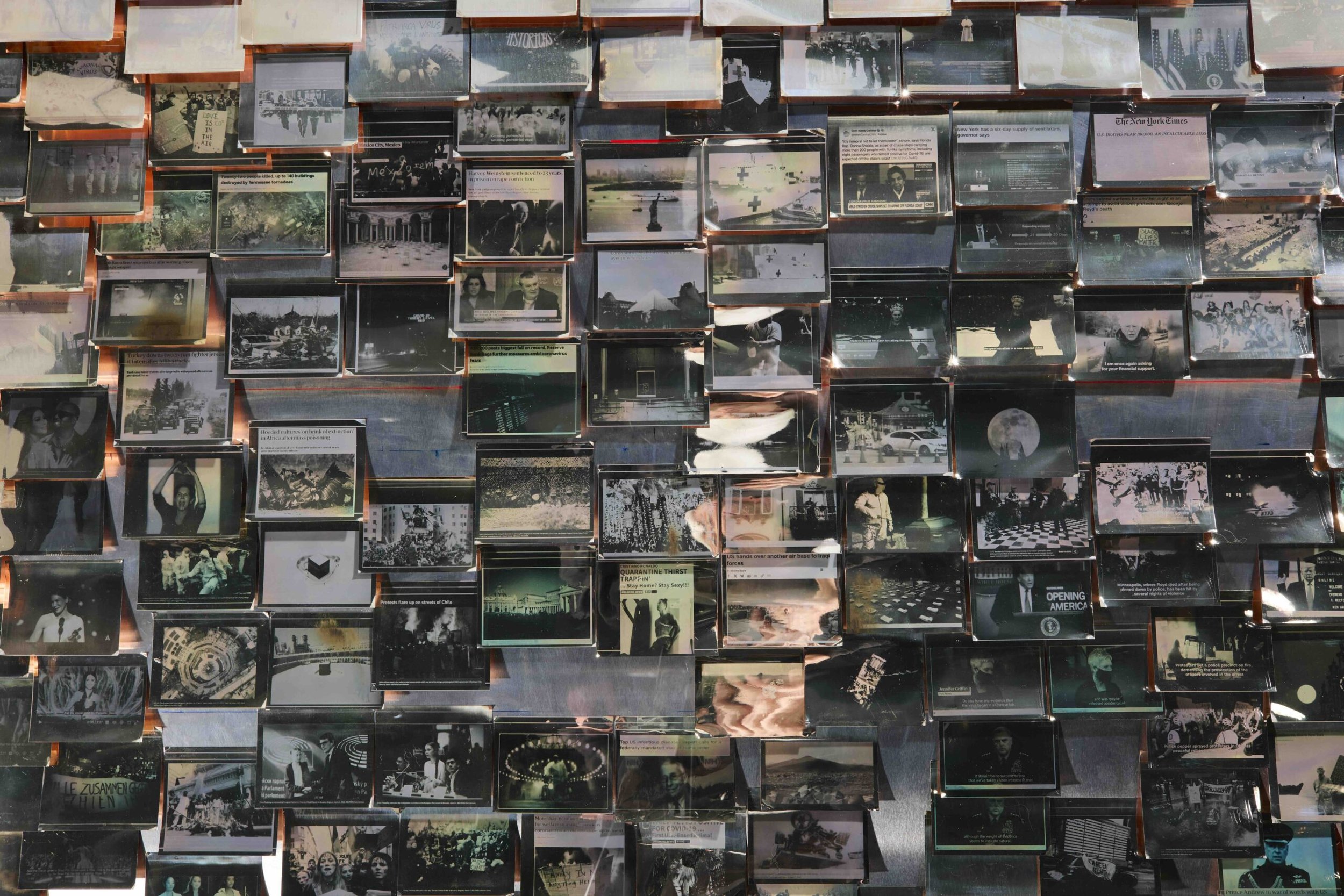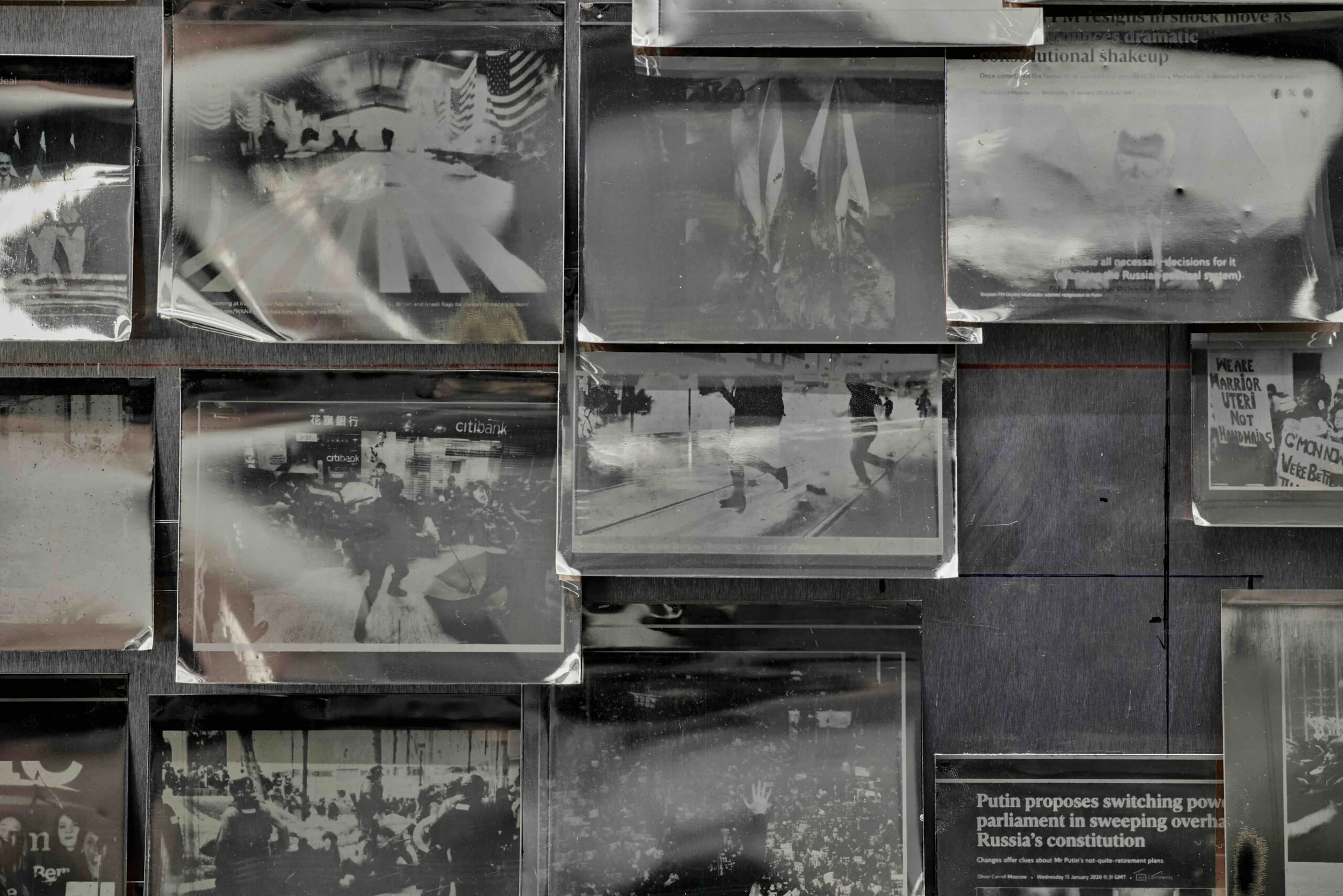Coen Young 2020
27 JUNE - 26 JULY 2025 Mais Wright Gallery maiswright.com
Disgruntled Pope Francis pulls himself free from woman’s grasp; Scott Morrison says he tried in ‘good faith’ to comfort bushfire victims; Turkey deploys troops to Libya; Queen agrees ‘transition’ to new role for Harry and Meghan; Residents in Victoria and New South Wales count terrible cost during brief reprieve from disaster that has sent smoke as far as New Zealand; BREAKING: Hong Kong to close 6 of 14 border checkpoints…; Stay Home? Stay Sexy!!!; DEATHS New York has a six-day supply of ventilators; Covid-19 is natural and not from a lab…; Elton John performs “I’m Still Standing”; Lebanon explosion…; Kamala Harris announced as Joe Biden’s running mate; Lady Gaga dominates…
A photograph—one black-and-white photograph pinned to a metal screen. Smoke billows and swirls into the sky with a ferocious sense of inevitability, its black core erupting as if from a volcano. Reproduced in newspapers worldwide, this photograph of the 2019-2020 bushfires represented what The Independent called “hell on earth” and an environmental emergency, featuring the headline “This is what a climate crisis looks like.”[1] For Australians, it was known as Black Summer.
The fleeting nature of the news, its images, and its capacity to generate or recall memories in the age of digital phenomena form what artist Coen Young terms the “white noise of history.” From the early days of 2020 and the devastating bushfires across Australia, closely followed by Covid-19, the Black Lives Matter movement, climate disruptions, Brexit, and political turmoil, Young took daily screenshots of news articles from around the world, as if to reinforce the reality of what he witnessed. Dominated by photographs, these news articles are consumed on multiple levels, with images, headlines, and text fluctuating within the media format, each vying for our attention in a perpetual state of distraction and doomscrolling during a year in which most of us looked on through veils of yellow smoke or in Covid isolation.
Employing the daguerreotype process, Young reproduced these screenshots as photographs on precious silver-coated copper plates, which are mounted, as if to resemble a wall of sorrow or a Google Images screen filled with news headlines. Reflecting the viewer in the shiny surface of one year’s history, these ubiquitous yet fleeting photographs of world events and their associated memories are recalled in an almost atemporal space, where time exists in a distinct disjunction between before, during, and after. While Young’s work fixes these images in time, the experience of encountering these traces of global disasters, banal news, and pop culture evokes a sense of belatedness and perpetual return. Claire Bishop has identified the contemporary photographic condition of spectatorship, characterised by documenting the world at the same time as we look, engage, and respond—referring to it as “reflex documentation.”[2] Yet, such fleeting engagement with world events or banal news items is soon relegated to the past, to history, returning to our screens periodically through social media ‘memory’ algorithms.
In its inherent pastness, history serves as an account of something that has already transpired—it acts as a reckoning or an ordering of chaos. Indeed, Eduardo Cadava perceives history as perpetually on the verge of disappearing, bound to the traces of what is past and our capacity to read them.[3] Yet, photography has emerged as a medium through which history is documented as it unfolds. As Shawn Michelle Smith points out, “the photograph records a moment always already past, but also anticipates a future moment in which it might be seen. In this way, photography is defined by a logic of expectation because it seeks a future viewer.”[4] In other words, the event of photography is never complete. As Walter Benjamin contends, images come into legibility at a specific time, such as during the recollection of memories or moments of commemoration. In this future moment, in which the photograph is encountered, the viewer, much like history and photography itself, is inherently too late. While photographers capture an event through the mediating lens of the camera, the viewer is, in a sense, doubly distanced from the event. Instead, we primarily experience the news through photographs or screens—televisions, computers, or phones—that mediate our seeing and alter the temporality of that experience.
Young translates these mediated experiences and images from the screen into material objects—objects that are difficult to perceive and that, in turn, become miniature screens. These ubiquitous images of universal experiences are also intimate and personal, prompting viewers to recall their memories of this tumultuous year. Yet, what becomes apparent when encountering these daguerreotype photographs from a year in history is what we have forgotten, or indeed, events we did not directly experience. Throughout, Young inserts arbitrary interventions, screenshots of YouTube videos, and pop culture references that disrupt the narrative and provide a moment of reprieve. Recalling a shiny mirror ball or a public bathroom, the cold aesthetic of 2020 embodies a sense of indeterminacy, initially appearing rational and chronological, yet our focus becomes disrupted as time seems both compressed and expanded. This wall of what Young refers to as ready-made nostalgia unsettles our perception of time and how memories function, with these news events remembered through the white noise of history.
Donna West Brett, London, June 2025.
[1] Jane Dalton, “This is what a climate crisis looks like,” The Independent, Friday 3 January 2020, 1.
[2] Claire Bishop, Disordered Attention: How We Look at Art and Performance Today (Verso, 2024), 3.
[3] Eduardo Cadava, Words of Light: Thesis on the Photography of History (Princeton UP, 1999), 64.
[4] Shawn Michelle Smith, “Anticipatory Photographs: Sarah Pickering and An-My Le,” in Photography and Ontology: Unsettling Images, eds. Donna West Brett and Natalya Lusty (Routledge 2019), 74.
